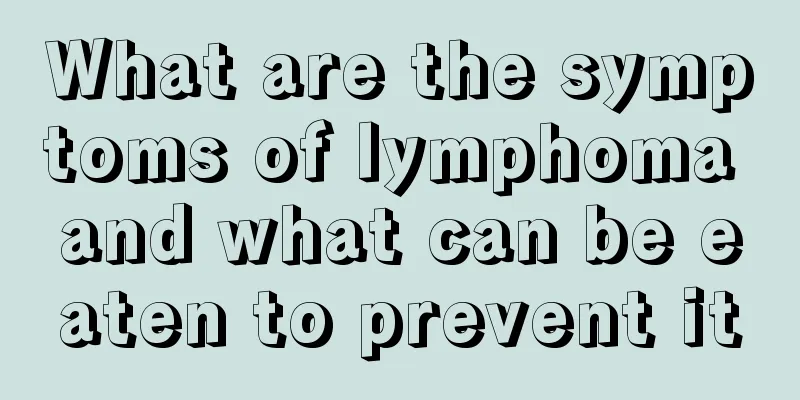Causes and treatment of alopecia areata

|
Alopecia areata is a relatively common hair loss disease. This type of hair loss usually occurs on the top of the head, and the area of hair loss will gradually expand. In life, alopecia areata usually occurs in young people, and the incidence rate is higher in young people over 20 years old. Patients with severe hair loss will cause all their hair to fall out. So what causes alopecia areata? How to treat it? Causes The cause and mechanism of alopecia areata are not yet fully understood, and may be related to psychological, autoimmune and genetic factors. treat 1. Local treatment (1) Intralesional injection of glucocorticoids: It is the first choice treatment for adult patients with alopecia areata whose hair loss area is less than 50%. It can cause local new hair growth in 60% to 67% of patients. Adverse reactions include local pain, skin atrophy and depigmentation, and the recurrence rate is high when treatment is interrupted; (2) Topical glucocorticoids: Topical glucocorticoid ointments have been widely used to treat alopecia areata in children or alopecia areata in adults with hair loss area <50%. Folliculitis is the most common adverse reaction. This therapy relieves the pain of patients, and the children have good compliance, so it is worth promoting; (3) Topical minoxidil: Minoxidil has long been used to treat male pattern baldness and is often used in combination with other methods to treat alopecia areata. (4) Topical anthralin: Anthralin has anti-inflammatory and immunosuppressive effects and can be used to treat leukoplakia. It is mainly used to treat alopecia areata in adults or children with long-term disease. Its adverse reactions include folliculitis, contact dermatitis, local lymphadenopathy, etc. (5) Topical contact sensitizers: Using sensitizers on alopecia areata lesions can induce artificial contact dermatitis, which can cause local hair regeneration. Diphenylcyclopropenone and dibutyl squarate are currently the most commonly used contact sensitizers for the treatment of alopecia areata, among which diphenylcyclopropenone can be used as the first choice treatment for alopecia totalis. 2. Systemic treatment (1) Glucocorticoids: Glucocorticoids mainly include oral and intravenous administration. Adverse reactions include acne-like dermatitis, weight gain, gastrointestinal discomfort, moon face and oligomenorrhea, which can gradually improve or disappear after stopping the drug for 3 months. Since glucocorticoids are associated with many adverse reactions, they should be used with caution in clinical practice and are only suitable for alopecia totalis, alopecia universalis, or rapidly progressing alopecia areata that is resistant to general treatment. (2) Oral compound glycyrrhizin: The usual dose is 2 to 3 tablets each time, 3 times a day, and one course of treatment is 2 to 3 months. Compound glycyrrhizin is a bidirectional immunomodulator. It has anti-inflammatory, immune-regulating, anti-allergic and steroid-like effects. 3. Physical therapy (1) 308 excimer laser: a new type of medium-wave ultraviolet light source, which can be used clinically to treat stubborn alopecia areata that is resistant to general treatments; (2) Other physical treatments: There have also been reports of narrow-band ultraviolet radiation, photodynamic therapy, liquid nitrogen cryotherapy, etc. for the treatment of alopecia areata, but they are mainly effective for localized alopecia areata and have poor effects on total alopecia and universal alopecia. In addition to the above treatments, there are other immunosuppressants (such as azathioprine), traditional Chinese medicine and autologous hair transplantation to treat alopecia areata. The causes of alopecia areata are mainly related to genetic susceptibility, autoimmunity, environmental factors and psychological factors. Psychological factors can aggravate the disease or cause it to recur. The treatment options should be based on the severity of the disease. However, not all patients with alopecia areata need treatment. About 30% to 50% of patients with localized alopecia areata can relieve or heal themselves within 1 year. For patients whose hair loss affects their appearance and whose long-term treatment effect is not ideal, they can also consider wearing wigs instead of excessive treatment. |
<<: What is the fastest diuretic drink
Recommend
Which hospital is the most authoritative for lymphoma surgery
Malignant lymphoma, also known as "lymphoma&...
How to treat erythema on the back
Many patients will scratch with their hands when ...
What are the dangers of not having surgery for thyroid cancer
If thyroid cancer is not treated with surgery, it...
Can lung cancer be checked by chest X-ray?
Can lung cancer be detected by chest X-ray? 1. Th...
What is premature heart beat
Patients with premature heart beats usually exper...
Does Houttuynia cordata help lose weight?
Houttuynia cordata has no weight loss effect, so ...
Can black mango be eaten? How to store and select mangoes?
Mango is a fruit that is difficult to preserve. I...
What are the symptoms of dying from throat cancer
Symptoms before death in late stage of laryngeal ...
Hazards of paint
Speaking of paint, I believe that many friends wh...
Five blue dots tattooed on the wrist
Some people like to observe all kinds of things i...
What's wrong with the electric sound in my ears?
The ear is an important part of the human body. I...
What to do with wind-heat cold headache? What are the treatment methods?
Wind-heat cold not only causes headaches, but als...
What are the early dangers of skin cancer
In today's developed society, skin cancer is ...
What are the precautions for sweat steaming
Nowadays, with the continuous improvement of livi...
The efficacy and role of lecithin and the people it is suitable for
Many people don't quite understand the role o...









